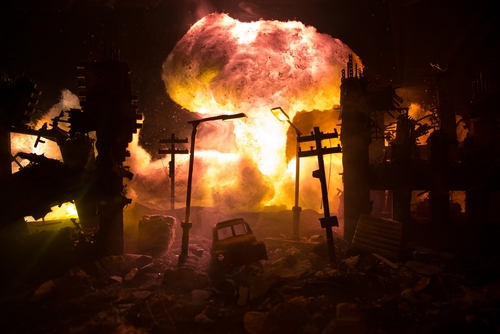
In an age where the specter of nuclear conflict looms large, the United States finds itself at a critical juncture in its defense strategy. Recent studies have highlighted a chilling scenario: a nuclear strike targeting America’s intercontinental ballistic missile (ICBM) silos could lead to a catastrophic loss of life, not just within the nation’s borders but extending into neighboring Canada and Mexico as well.
The ICBM launch facilities, strategically placed across Colorado, Montana, Nebraska, North Dakota, and Wyoming, are the backbone of the country’s retaliatory capabilities. In the event of an attack, these sites would be the adversary’s primary targets, aiming to cripple the U.S. response and deliver a devastating blow to national security.
Nuclear war in the US would wipe out 300 MILLION: New models reveal 'devastating' impact of radioactive fallout from an attack on America's missile launch facilities. I sure miss mean tweets and world peace! https://t.co/xl4mVfVcYm pic.twitter.com/R4OTVeOsls
— Tony Seruga (@TonySeruga) November 16, 2023
Scientists have modeled the potential impact of such an attack, using the 450 ICBM silos as ground zero. The projections are dire, with the possibility of radioactive fallout spreading far due to prevailing winds, affecting areas with low population density and carrying the lethal material across state lines and international borders.
The worst-case scenario is unfathomable – a staggering 90 percent of the population in the lower 48 states could be at risk, with lethal doses of radiation threatening over 300 million lives. This grim prediction is based on sophisticated weather pattern simulations and the hypothetical detonation of an 800-kiloton warhead on each silo.
Sharing this nuclear war video is the most important thing you can do to prevent nuclear war. Thank you 😘pic.twitter.com/sHvxMxc0f3
— Rose🌹 (@RoseXrp) November 12, 2023
In the immediate vicinity of the silos, the local populace would face certain death from radiation exposure, with levels reaching eight grays (Gy) – a unit of measurement for absorbed radiation dose. To put this into perspective, just one Gy is enough to cause severe radiation sickness, and the annual limit for safe exposure is a mere 0.001 Gy.
The implications of such an attack extend beyond the initial blast and radiation sickness. The long-term effects on agriculture, infrastructure, and the environment would be profound, leading to a breakdown of societal order and economic collapse. The ripple effects would be felt worldwide, destabilizing global markets and geopolitical alliances.
This alarming analysis serves as a wake-up call for policymakers and the public alike. The United States is currently engaged in a $1.5 trillion modernization of its nuclear arsenal, a move that some argue perpetuates an arms race rather than enhancing long-term security. It begs the question: is it time to rethink our approach to nuclear deterrence?
The concept of mutually assured destruction has long been the rationale behind maintaining such a formidable nuclear arsenal. However, the prospect of these weapons becoming targets themselves introduces a paradox – the very deterrents meant to protect us could invite unparalleled disaster.
As a nation, we must engage in a serious dialogue about our nuclear strategy. The stakes are too high to ignore the potential consequences of our current posture. It is incumbent upon us to explore alternative paths to security that do not leave us teetering on the brink of nuclear annihilation.










